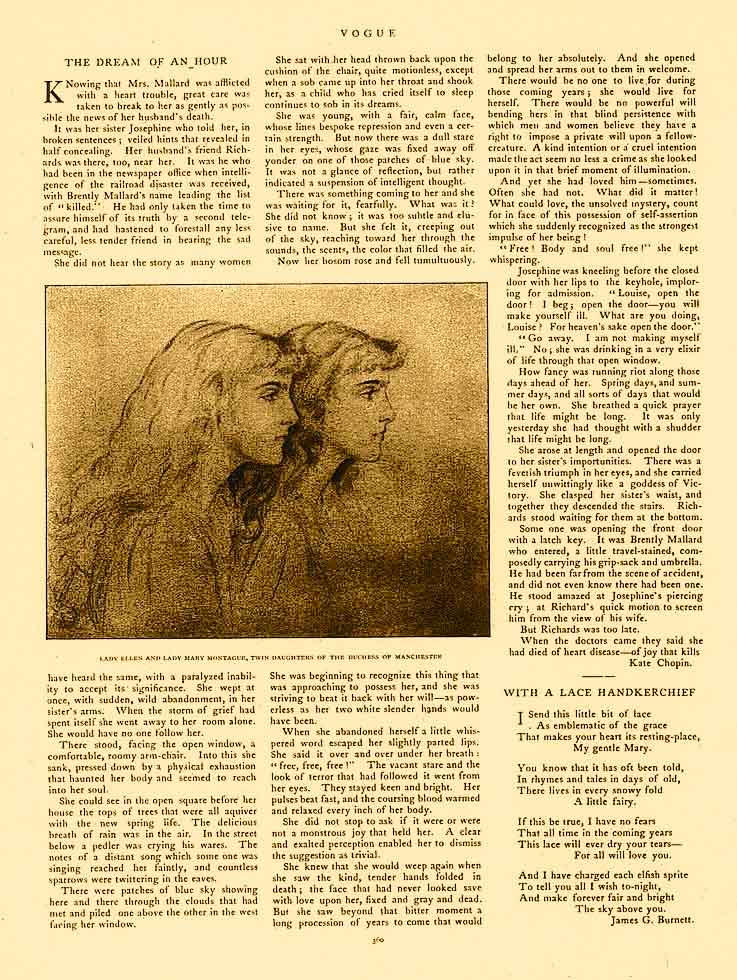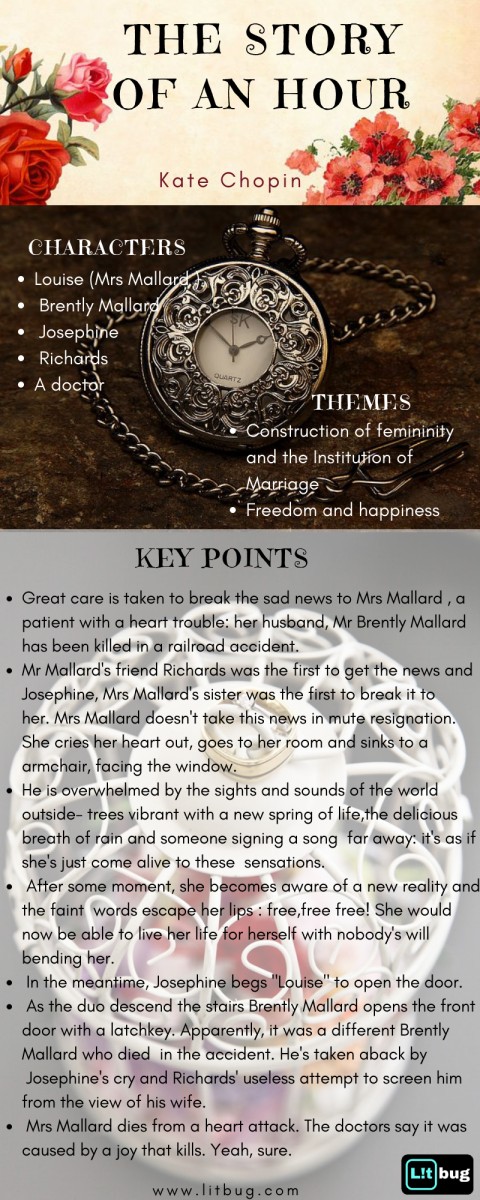
Kate Chopin tried to evoke pity in relation to Louise Mallard and make the reader fully imbued with the character’s story to understand the story’s deeper meaning. Kate Chopin knew how difficult it was to publish work that might not be socially accepted, and she was working hard to achieve the equality that her colleagues could not accomplish. Discussions led to the idea that such characters as Louise Mallard must be clearly analyzed to make the story accessible to general reading.

The Story of an Hour written 1894 was argued by many famous critics of the nineteenth century. According to Yazgi, Kate Chopin has never been an active feminist, but she believed in women’s power, which can go against social norms (147).

(Chopin used both titles in her private papers, and recent editors have generally reprinted it as “The Story of an Hour.The main goal that Kate Chopin wanted to convey in The Story of an Hour is the liberation of a woman from the limited marital role and gender persuasion of the women’s place in the world. It appeared in December under the title “The Dream of an Hour”-which, readers will agree, lends the story’s theme a different connotation-and it was reprinted a month later in St. And so in October she resubmitted the story to Vogue, and the editors reversed their decision-either because she had revised it or because of the extraordinary success of her book. Her growing fame allowed her to become even more adventurous with her fiction. Gilbert points out that, even in its published form, Chopin’s story “questions the very institution of marriage.” According to the author’s account book, “The Story of an Hour” was rejected by Vogue in April 1894, and during the following months it was similarly declined by Century Magazine, Short Stories, and Chap-Book.īut, that same year, Kate Chopin had published her story collection, Bayou Folk, to universally favorable notices-over one hundred reviews in the national press, followed by a glowing profile that appeared in The Writer. Toth argues that a tale any more faithful to O’Flaherty’s real-life widowhood “would have been much too radical, far too threatening, in the 1890s,” while the literary critic Sandra M. In recent decades this story (along with “ Désirée’s Baby”) has become Chopin’s most famous work of short fiction-but its publication was initially resisted by magazine editors. Four decades later, Chopin would use the incident as the basis for “The Story of an Hour”-but the outcome of her fictional retelling departs from the real-life calamity in a significant, startling way. Her mother, Eliza O’Flaherty, suddenly found herself a widow, in mourning but also in sole possession of a large estate that (according to Chopin’s biographer Emily Toth) was worth $25,000, a considerable amount at the time. Among the dead was the father of five-year-old Katherine O’Flaherty, who would later become famous as the writer Kate Chopin. Louis and Jefferson City, the structure collapsed and all but one car of a Pacific Railroad train plunged into the Gasconade River, killing more than thirty passengers and injuring scores of others. In 1855, during the ceremonial opening of a bridge connecting St.

For more about this accident, see the Ray City History Blog.

“The Railroad Disaster to the West India Mail near Blackshear, Georgia.” Engraving (from photograph) in Harper’s Weekly, March 1888. Previous Story of the Week selections by Kate Chopin “Pacific train meets disaster in November 1855” (Anna Lee Frohlich, Colorado Gambler, see page 10)įor teachers and students: Questions and answers about “The Story of an Hour” (The Kate Chopin International Society)


 0 kommentar(er)
0 kommentar(er)
